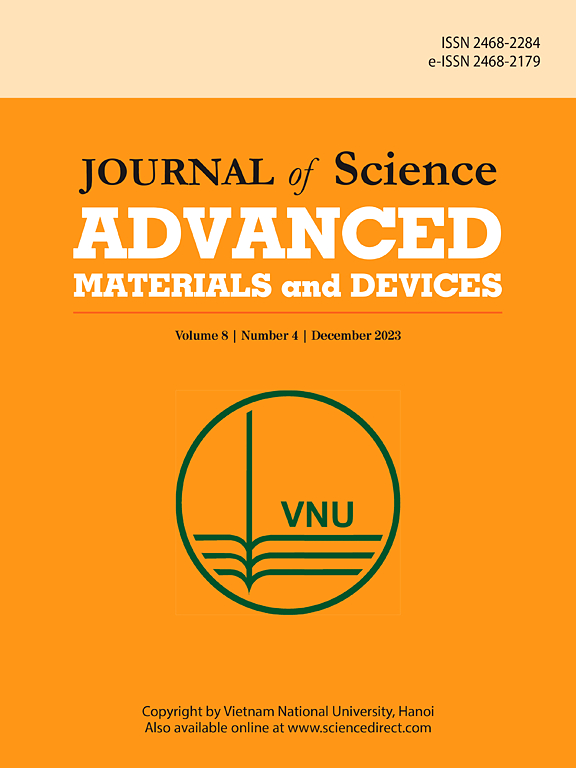CMOS-integrated UV phototransistor utilizing a novel p-GaAs/p-Si staggered heterojunction
IF 6.8
3区 材料科学
Q1 MATERIALS SCIENCE, MULTIDISCIPLINARY
Journal of Science: Advanced Materials and Devices
Pub Date : 2025-05-08
DOI:10.1016/j.jsamd.2025.100891
引用次数: 0
Abstract
This paper introduces a high-performance, CMOS-compatible ultraviolet (UV) phototransistor utilizing a novel staggered heterojunction between p-type Gallium Arsenide (GaAs) and p-type Silicon (Si). This innovative device design overcomes limitations in traditional silicon-based UV photodetectors by employing a p-GaAs light-absorbing channel, enabling efficient photon-to-current conversion. The device, operating in the subthreshold regime, demonstrates exceptional performance characteristics, including a high responsivity of 138 at 3 bias, a linear dynamic range of 220 , near-zero dark current, and a remarkable photo-to-dark current ratio on the order of . These findings highlight the potential of the presented heterostructure approach for achieving high-sensitivity and low-noise UV detection, with a clear path towards seamless integration into existing electronic circuits and advanced sensing applications.
利用新型p-GaAs/p-Si交错异质结的cmos集成UV光电晶体管
利用p型砷化镓(GaAs)和p型硅(Si)之间的交错异质结,介绍了一种高性能、cmos兼容的紫外(UV)光电晶体管。这种创新的器件设计克服了传统硅基紫外光电探测器的局限性,采用了p-GaAs光吸收通道,实现了高效的光子到电流转换。该器件在亚阈值状态下工作,表现出卓越的性能特征,包括在3v偏置下138 mA/W的高响应度,220 dBm的线性动态范围,接近零的暗电流,以及1011量级的显着的光暗电流比。这些发现强调了异质结构方法在实现高灵敏度和低噪声紫外线检测方面的潜力,并为无缝集成到现有电子电路和先进传感应用提供了明确的途径。
本文章由计算机程序翻译,如有差异,请以英文原文为准。
求助全文
约1分钟内获得全文
求助全文
来源期刊

Journal of Science: Advanced Materials and Devices
Materials Science-Electronic, Optical and Magnetic Materials
CiteScore
11.90
自引率
2.50%
发文量
88
审稿时长
47 days
期刊介绍:
In 1985, the Journal of Science was founded as a platform for publishing national and international research papers across various disciplines, including natural sciences, technology, social sciences, and humanities. Over the years, the journal has experienced remarkable growth in terms of quality, size, and scope. Today, it encompasses a diverse range of publications dedicated to academic research.
Considering the rapid expansion of materials science, we are pleased to introduce the Journal of Science: Advanced Materials and Devices. This new addition to our journal series offers researchers an exciting opportunity to publish their work on all aspects of materials science and technology within the esteemed Journal of Science.
With this development, we aim to revolutionize the way research in materials science is expressed and organized, further strengthening our commitment to promoting outstanding research across various scientific and technological fields.
 求助内容:
求助内容: 应助结果提醒方式:
应助结果提醒方式:


